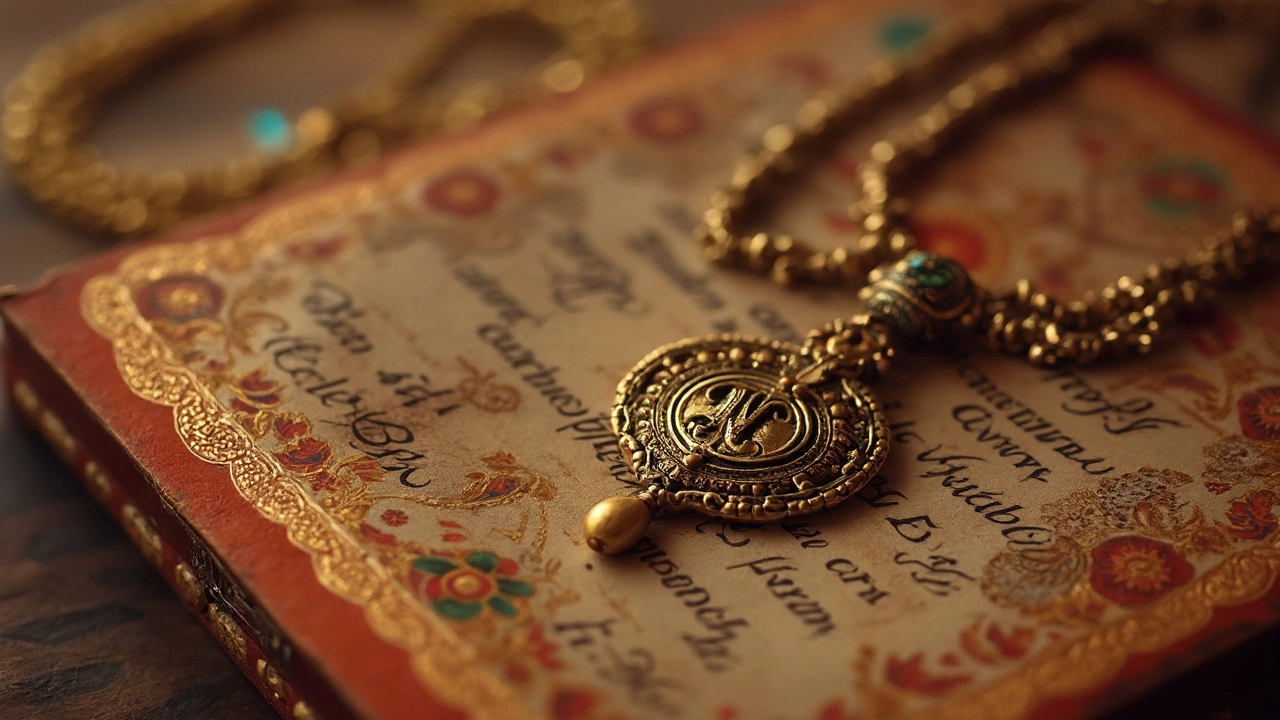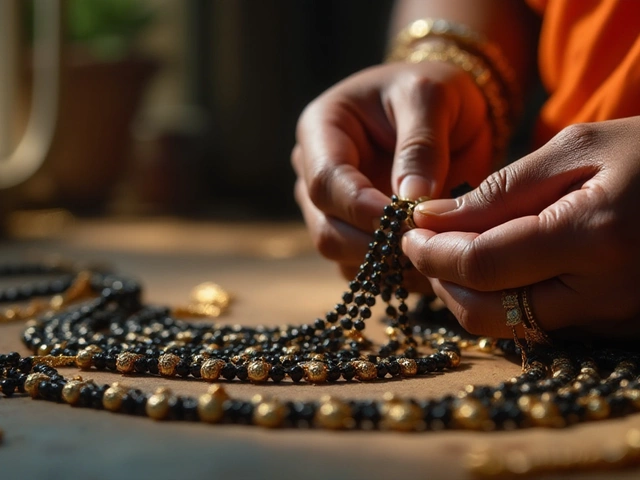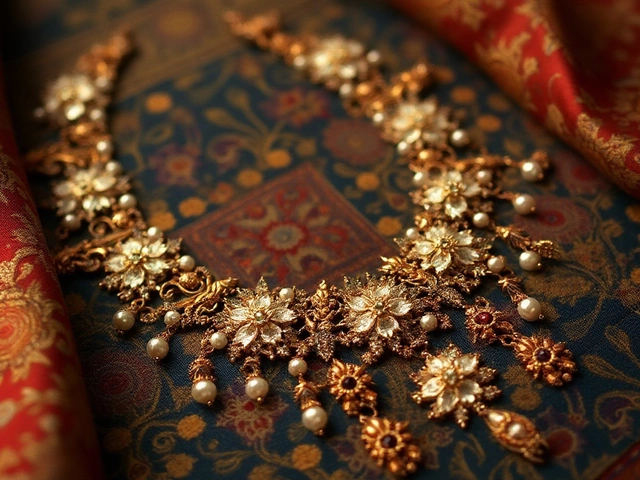Ever found yourself puzzled over a small 'N' engraved inside a beautiful piece of antique jewelry? You're not alone. This tiny mark can actually be a treasure trove of information if you know how to read it. Jewelry marks, often called hallmarks, are like secret codes left by jewelers of the past. They can tell you about the origin, the maker, and sometimes even the precious metals used.
But what does 'N' stand for? Is it a date, a place, or something else? The truth is, it varies. In some pieces, it might represent a date code. For example, certain companies used letters to signify the year a piece was made. In other cases, it could denote a maker's mark, revealing the name of the jeweler or company that crafted your piece. Understanding these aspects can increase your appreciation and knowledge about what you own.
- The Mystery of 'N' in Jewelry
- Decoding Hallmarks and Their Importance
- Tips for Antique Jewelry Buyers
- Caring for Your Antique Pieces
The Mystery of 'N' in Jewelry
The small 'N' you find on antique jewelry isn't just a random choice. It's a hallmark, and it could actually hold a bunch of clues about your jewelry's secrets. Jewelry hallmarks are like ID cards for these beautiful antiques, with the 'N' possibly being a big hint.
Understanding Hallmarks
Back in the day, jewelers often stamped their work with marks that gave info about its origins. The 'N' can be part of a date code system, where each letter represents a year within a specific cycle. For instance, British Victorian jewelry used a letter system indicating the year it was hallmarked, and sometimes 'N' fell into this category.
Mark of the Maker
In other instances, 'N' might stand for a maker's mark. This tells you who made the piece, elevating its historical significance. Specific regions and periods have their own unique marking systems, so figuring out exactly what your 'N' stands for can take some research.
Check and Verify
The best way to unravel this mystery is to compare it against reliable hallmark databases or seek the expertise of a jewelry appraiser. Collecting additional hallmarks, like metal purity marks or country of origin, can also add to the puzzle. It's fascinating detective work that adds depth to the love of vintage pieces.
If you're thinking of diving deeper into antique investments or just looking for some fun historical context behind a family heirloom, understanding these marks, including the 'N', really emphasizes the importance of jewelry hallmark knowledge. Be sure to check out more comprehensive guides or consult with specialists to uncover the full history behind your treasured find.
Decoding Hallmarks and Their Importance
Hallmarks might seem like tiny stamps, but they're packed with stories of the past. They're the jewelry world's equivalent of a treasure map. Understanding them not only boosts your antique jewelry knowledge but also helps to verify authenticity and even worth.
The Basics of Hallmarks
At their core, hallmarks are marks or engravings found on jewelry such as rings, bracelets, and necklaces. These stamps usually consist of a combination of symbols, numbers, and letters that might seem random at first glance.
Generally, a hallmark will tell you about:
- The type of precious metal and its purity
- The maker or manufacturer
- The assay office that certified the piece
- The year it was made, especially in places like the UK
In terms of the 'N' you might see, it could mean a specific year in a chronological sequence displayed by a jeweler or an assay office. For instance, certain British hallmarks use letters to represent years in alphabetical cycles.
The Importance of These Marks
Recognizing hallmarks allows you to separate authentic pieces from reproductions or fakes. The hallmark acts as a certificate of the jewelry's creation process and materials used. This knowledge can protect you from investing in something that's not what it's claimed to be.
"Understanding hallmarks isn't just for collectors; it's for anyone who values authenticity and history," explains renowned jewelry historian Jeanine Griffin.
Having this intel lets you appreciate the history and craftsmanship behind each charming piece, and maybe even impress your friends with your newfound knowledge!
Some Common Examples
A fun fact: in the UK, hallmarks have been used since 1300! They're one of the oldest forms of consumer protection. Here's an example of hallmarks you might find on a British piece:
| Symbol | Meaning |
|---|---|
| Leopard's Head | London Assay Office |
| Anchor | Birmingham Assay Office |
So next time you pick up a beautiful piece of antique jewelry, take a closer look at those little engravings. They could tell you an entire history hidden in plain sight!

Tips for Antique Jewelry Buyers
Buying antique jewelry can be a thrilling experience, but without the right know-how, it can also be a bit daunting. Let's break it down into manageable advice so you can shop with confidence and maybe even snag a hidden gem.
Do Your Homework
Before you splash out on that stunning brooch or ring, do a bit of research. Understanding hallmark symbols, like the infamous 'N', and what they signify is a solid start. Various resources are available online, and some even cover specific collections or jewelers. As jewelry historian David Bennett said,
"Knowing the history behind the piece is as precious as the jewel itself."
Condition is Key
Always inspect the condition of the piece, as wear and tear can significantly affect its value. Look out for scratches, missing stones, or signs of repair work. A magnifying glass is your best friend here!
Seek Expert Opinions
If you're unsure, don’t hesitate to consult with an expert. Jewelers or certified appraisers can provide insights into authenticity and worth. It's sometimes worth paying a little for professional opinion to avoid costly mistakes.
Know Where to Buy
Buying from reputable sources, like licensed dealers or established auction houses, is crucial. While flea markets and online platforms can be fun, they’re riskier. Always check the credentials of the seller.
Budget Wisely
Setting a budget before you shop can keep you grounded. Antique jewelry prices can range widely, so decide on how much you’re willing to invest. Remember, the emotional value should also factor into the decision, not just the market price.
- Research hallmark symbols thoroughly.
- Inspect jewelry condition closely.
- Consider consulting certified appraisers.
- Prioritize reputable sellers.
- Stick to your buying budget.
Trends in Antique Jewelry
According to recent data, trends favor unique designs and pieces with documented history. Some studies show an increase in demand for vintage identification, making it more crucial to be well-informed. Check out the table below for a brief look at consumer preferences:
| Preference | Percentage |
|---|---|
| Unique Designs | 45% |
| Documented History | 30% |
| Affordability | 25% |
With these tips under your belt, you'll be better prepared to navigate the charming yet complex world of antique jewelry. Happy hunting!
Caring for Your Antique Pieces
Owning antique jewelry is like holding a piece of history, but it comes with the responsibility of proper care. Old pieces are delicate, and if you treat them like modern ones, they might not last long. Here’s how you can keep them sparkling and intact.
Avoiding Damage
First off, handle your antique jewelry with care. They are not built to withstand the daily wear and tear that current-day pieces are made for. Avoid exposing them to harsh chemicals or extreme temperatures, which can cause damage to both the metal and any gemstones.
- Keep them away from household cleaning chemicals.
- Don’t wear them in high-heat environments like saunas.
- Avoid sudden temperature changes; they can cause cracks in some stones.
Proper Storage
When you’re not flaunting your antique jewelry, store it right! Avoid the temptation to chuck it into a jewelry box with your everyday bling, where it could easily get scratched.
- Use a soft-lined, separate compartment or pouch for each piece.
- Store in a dry place to prevent tarnishing.
Regular Cleaning
Regular cleaning can keep your pieces looking good, but you have to do it right. Avoid dunking them in commercial jewelry cleaners which can be too harsh. Instead, a gentle clean is the way to go.
- Use a soft, lint-free cloth to wipe away any surface dirt.
- If deeper cleaning is required, lightly dampen the cloth with warm water and wipe gently.
- Dry immediately after cleaning to prevent moisture damage.
Professional Maintenance
For an added layer of care, have your pieces checked annually by a professional jeweler. They can spot potential issues like loose stones or worn prongs and address them before they become bigger problems.
Here's a small tip: keeping an inventory list of your pieces, along with notes on condition and last maintenance done, might be useful. It'll help you manage each piece’s care routine effectively.



